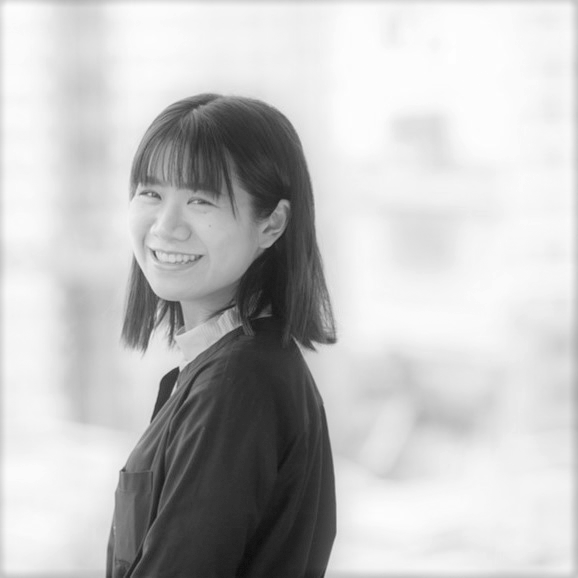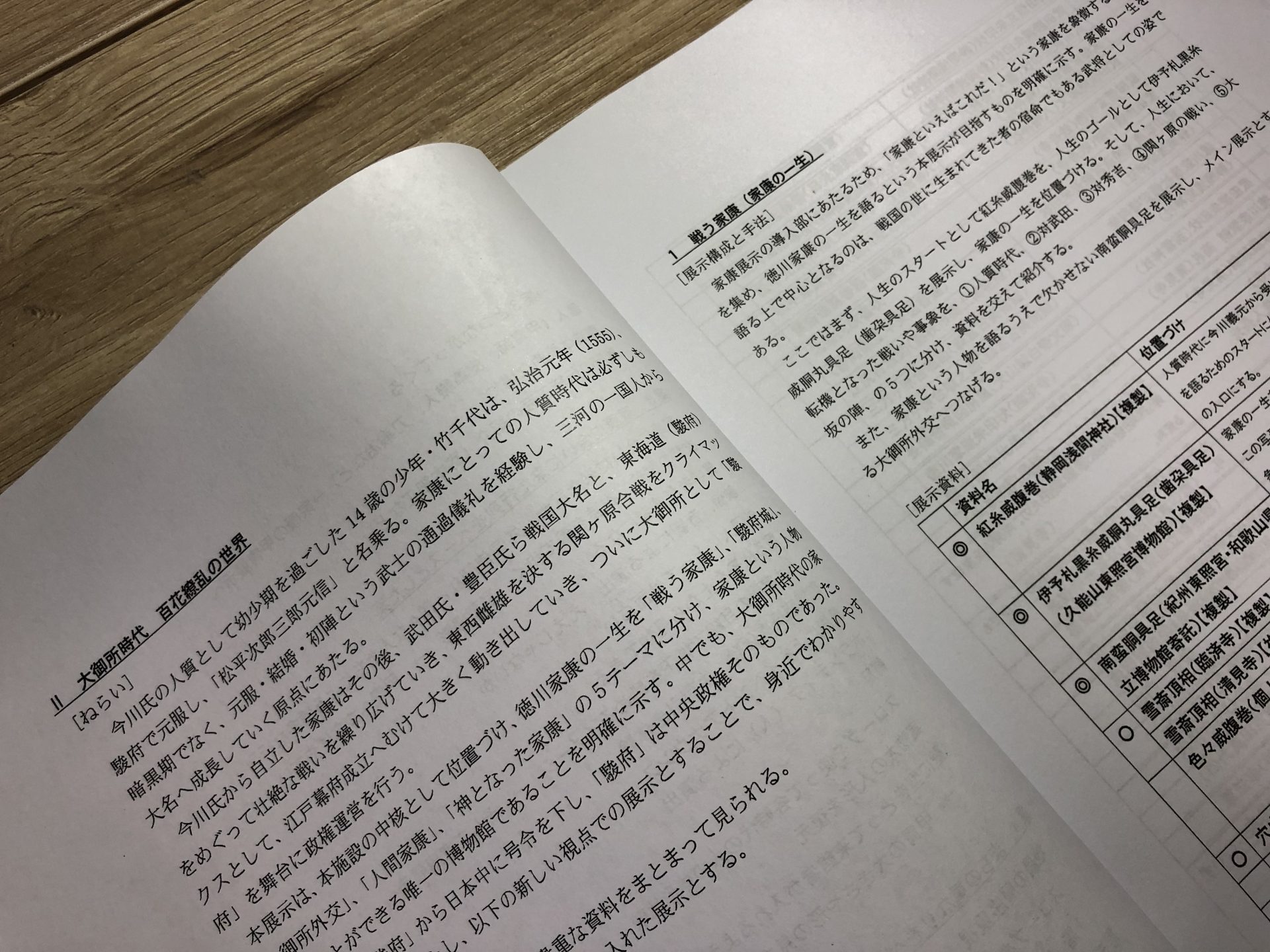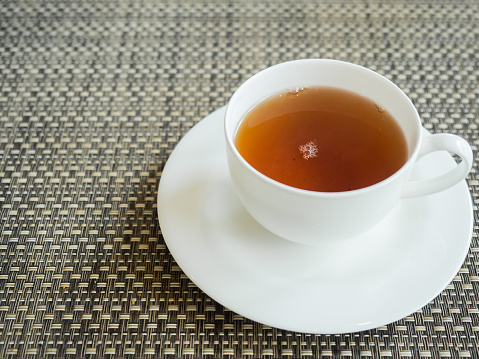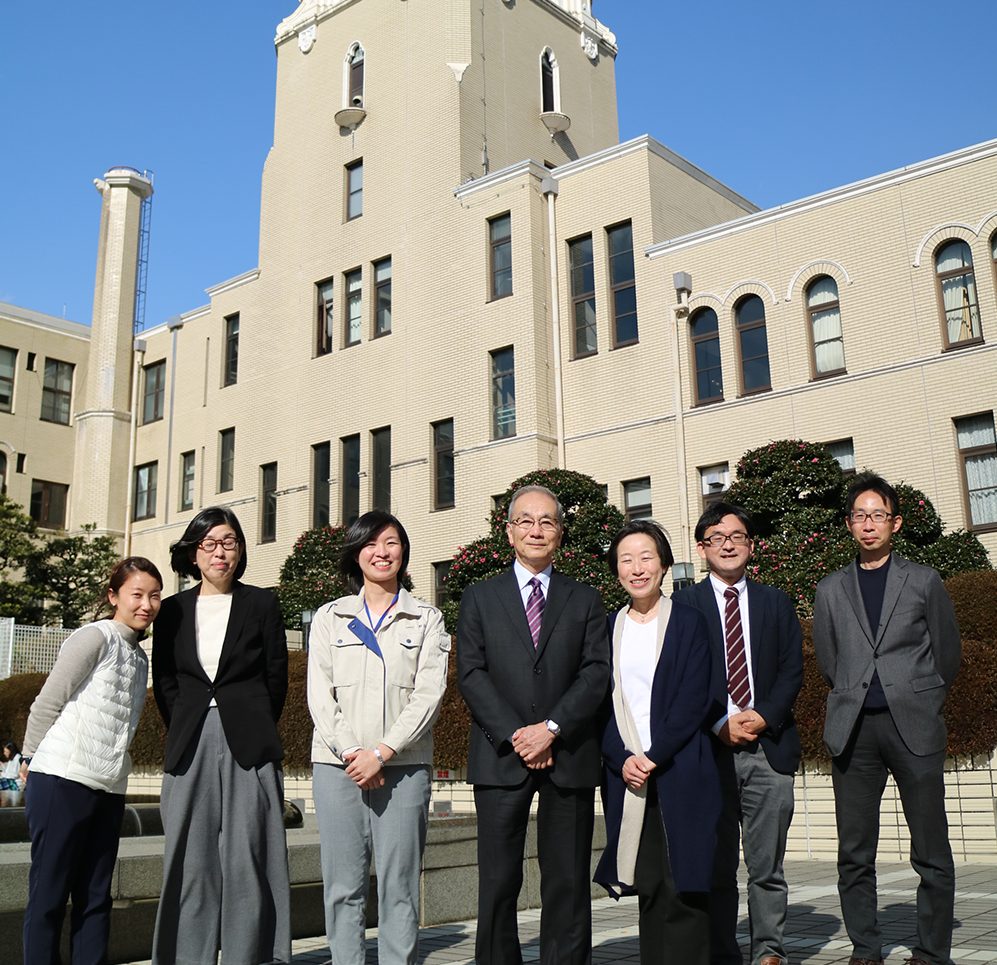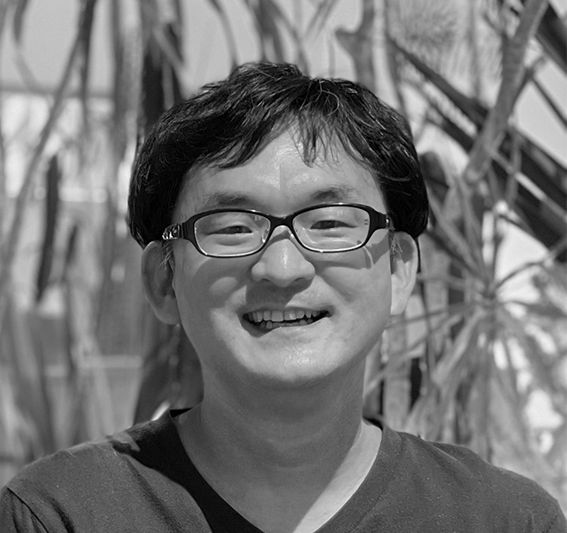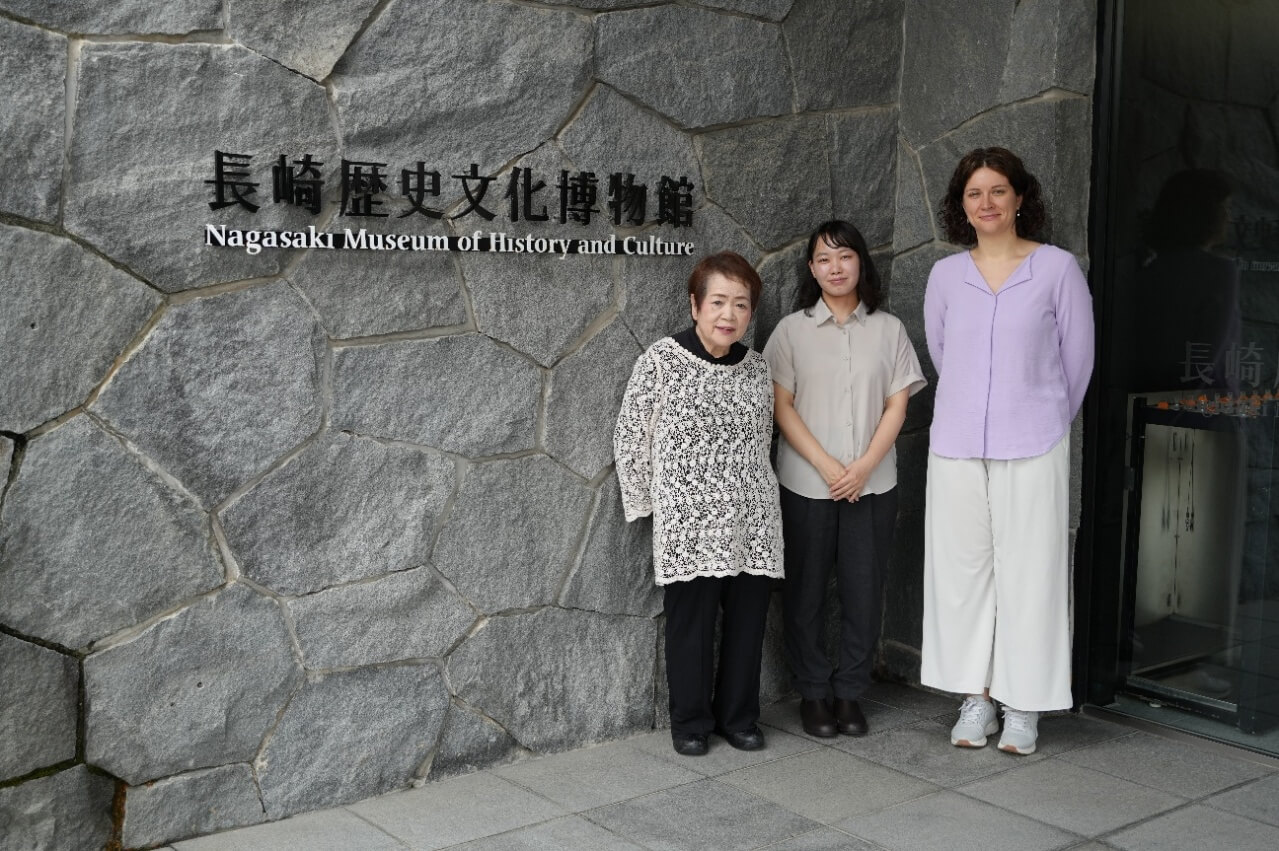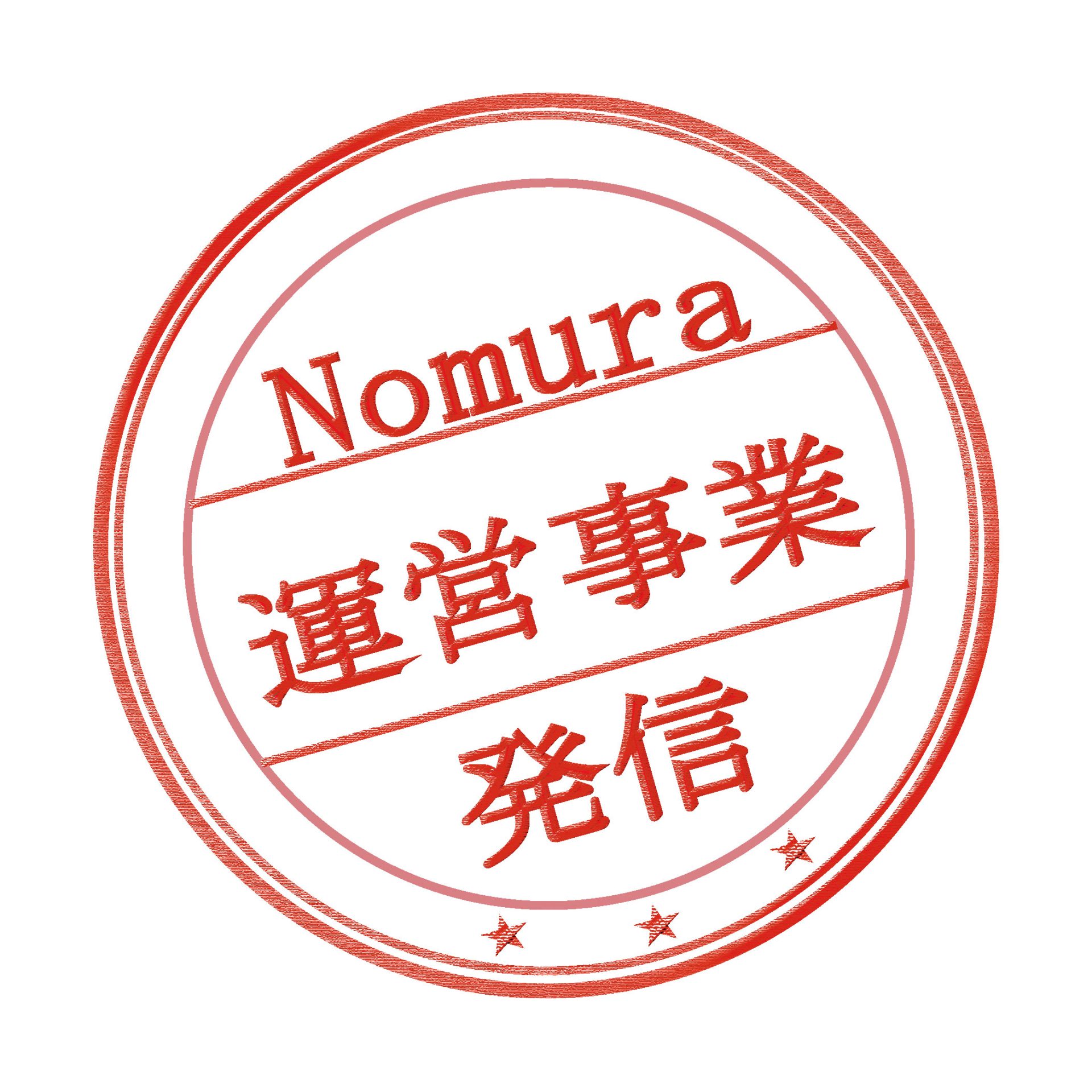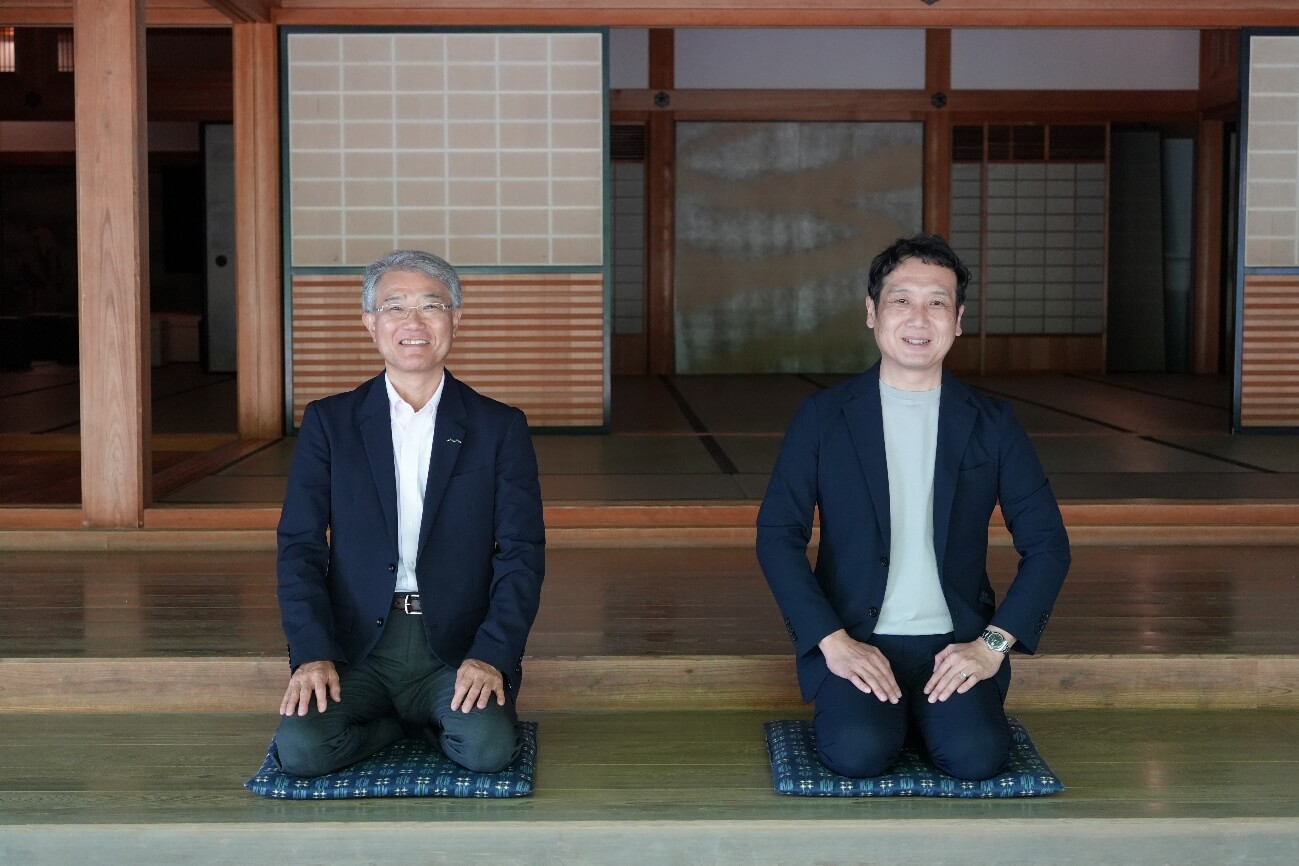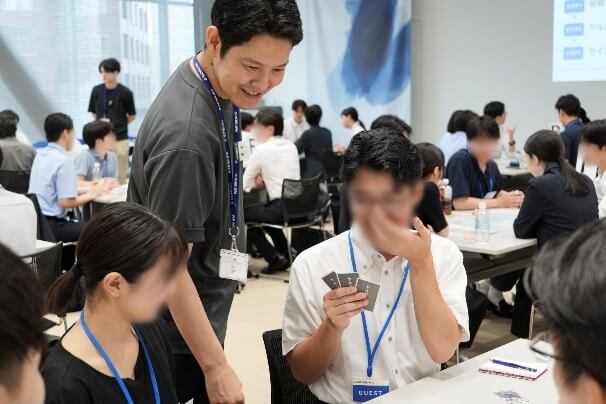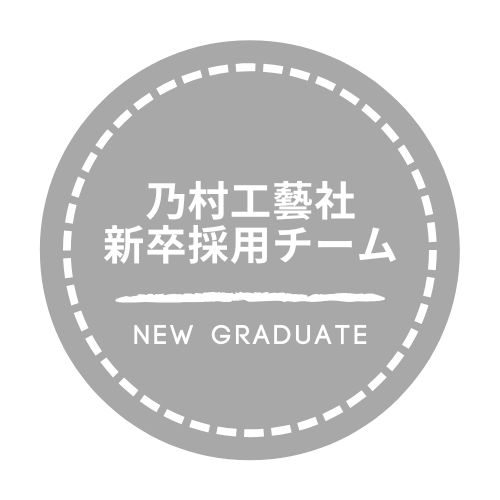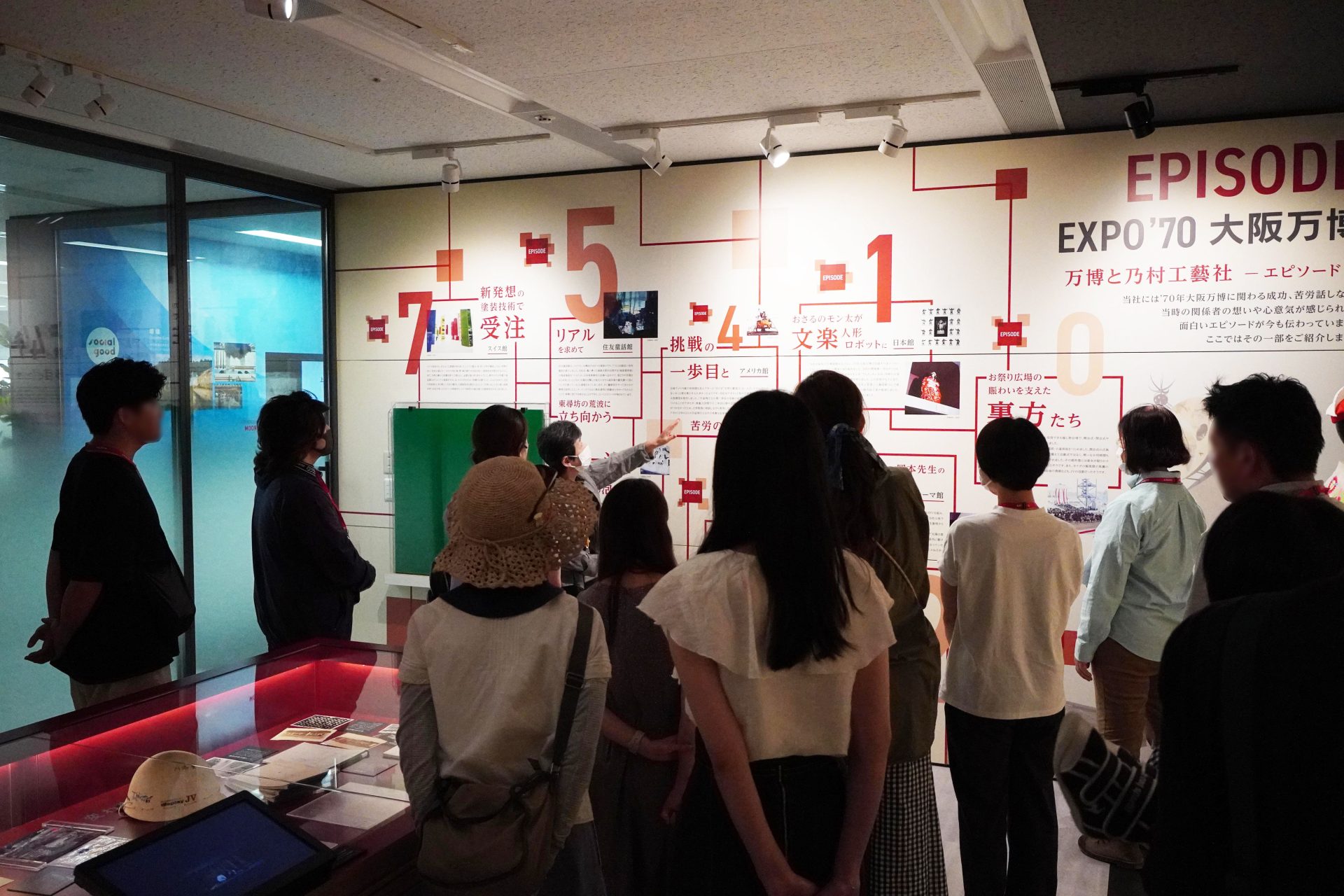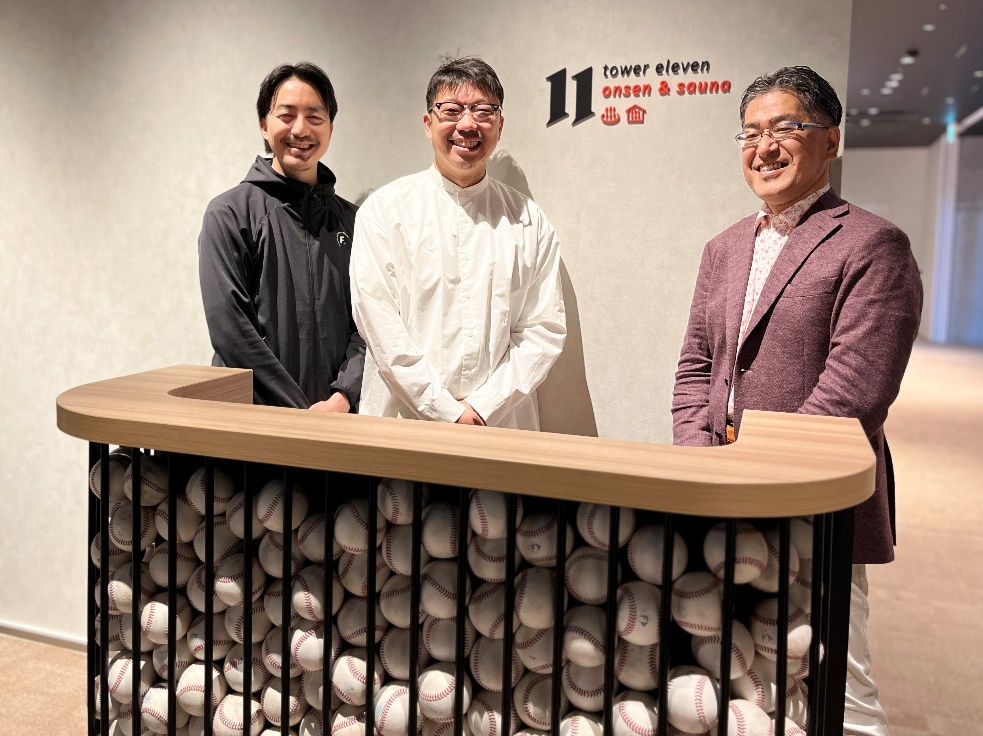- text and edit by
- Ena Taka
It has been about two years since the grand opening of Shizuoka City Museum of History.
This is the third installment of a series that delves deeper into the significance of the establishment of a history museum in Shizuoka City. We speak with three people: Ayano Masuda, the curator in charge of the early modern exhibition, Nayu Ota (in 2022), who was in charge of the modern exhibition, and Nobuyuki Endo, technical director NOMURA Co., Ltd., who was in charge of the actual production of the exhibition, such as dioramas and models. The interviewer is Seiichiro Mori, planning director NOMURA Co., Ltd.
*The interview was conducted in July 2022, prior to the grand opening.
For the Early Modern and Modern Period exhibits, two models were created: one for the procession scene of the Hatsukaesai Festival at Shizuoka Sengen Shrine in the Edo Period, and one for the downtown area of Shizuoka in the 1950s. In order to create exhibits suitable for a history museum, the models will talk about the process of making them, including historical verification, from the planning intention to the collection of materials, verification, and completion of the exhibits, along with the difficulties they faced and messages to visitors.
The Hatsukasai Festival was attended by many historical figures, including Tokugawa Ieyasu.
forest
First of all, could you tell us how you became involved in this project?
Masuda:
In 2011, the basic concept of the Shizuoka City Museum of History was formulated, and they were looking for someone who could do curatorial work. I was a graduate student at the time, but I applied and was hired as a part-timer, and I worked on researching historical materials for five years. In addition to researching the necessary materials, I was also involved in planning and running the "Pioneer Exhibition" that ultimately displayed the results of the research.
After that, I worked as a curator at another museum, but when I found out that Shizuoka City Museum of History was looking for a curator before it opened, I applied and was hired. I started working there in 2021, right in the middle of creating the exhibits.
 Ayano Masuda, who was in charge of the early modern period exhibition, was also involved in researching materials during the early stages of the museum's establishment.
Ayano Masuda, who was in charge of the early modern period exhibition, was also involved in researching materials during the early stages of the museum's establishment.
forest
I would like to ask you about the Early Modern Period exhibit that you are in charge of. Could you please tell me what kind of festival the "Hatsukaesai" is that is introduced in the Early Modern Period exhibit?
Masuda:
In fact, the origins of the "Hatsukae Festival" are unclear, but it appears to have originally been a Buddhist event called "Hatsukae" held at Takyo-ji Temple in the city. At some point, the "Children's Dance" danced at this event began to be dedicated to Shizuoka Sengen Shrine as well. There is a record that the court noble Yamashina Tokitsugu watched "Children's Dance" at Shizuoka Sengen Shrine towards the end of the Sengoku period, and in the Edo period, Tokugawa Ieyasu's sons Yoshinao and Yorinobu also watched, making this a festival that has been beloved in Shizuoka City since ancient times.
During the Edo period, townspeople in the castle town would take out a procession called "Neri" to welcome young children from Kenhoji Temple and march to Shizuoka Sengen Shrine. At the time, the "Neri" was a procession of elaborate costumes and gorgeous floats. Documents show that the festival took place in the middle of the Edo period. This festival used to take place around February 20th of the lunar calendar, but is now held from April 1st to 6th.
forest
What kind of festival is the Hatsukakai Festival for the people of Shizuoka?
Masuda:
In the early modern period, it was an event that brought economic benefits to the people of Sunpu and was something they were proud of. There are also documents showing that in the Edo period, many people came to see the event, not only from Sunpu but also from neighboring areas.
Shizuoka Sengen Shrine is a foundation for the people of Shizuoka, and the Hatsukakai Festival can be said to be a festival that inherits and embodies the history and culture of Shizuoka city.
A three-dimensional representation of the "Neri" based on records written in the Edo period
forest
The Otatsumi float from the Hatsukasai Festival was recreated in a model, but were there any reference materials that you used when creating the model?
Masuda:
The motivation for making the model came from three old books of paintings. They are valuable old documents that were commissioned by a master plasterer in Hitojuku-cho 3-chome to be painted by an artist.
The illustrated booklet contains detailed descriptions of each element of the "Otatsu", while the written booklet contains detailed records of what preparations were made on what date, and what fabric the kimono was made from. The booklet dates back to 1848, but it gives a very good idea of what the "Otatsu" looked like at the time.
Collecting materials from the Edo period and recreating parts that were not depicted
forest
Could you please tell us about any difficulties you faced or the ingenuity you employed in turning the flat pictorial documents into a three-dimensional model?
Endo
It was very helpful to have a colored illustration when I was trying to make it three-dimensional. The illustration itself was very well drawn and had a certain charm. However, it wasn't completely sketched, so I worked on how to make it three-dimensional without destroying it, and how much of the image of the illustration I could reproduce.
We also asked Masuda to gather various materials about the parts of the painting that cannot be seen, and we used that as a basis for creating the piece.
 Nobuyuki Endo was in charge of the design. He has been involved in the creation of many historical models, including dioramas and models, for many years.
Nobuyuki Endo was in charge of the design. He has been involved in the creation of many historical models, including dioramas and models, for many years.
Masuda:
When the person in the picture is facing forward, the back part is obviously not visible, but if you don't know how the back obi is tied, whether the string goes around to the back, etc., you can't make it three-dimensional. I pulled out a thesis to research how to tie the obi in the Edo period. I also created the pattern of the kimono in consultation with Endo-san, referring to materials such as the Tokaido famous places illustrated book.
 Comparing the CG and drawings, and discussing the form of the design
Comparing the CG and drawings, and discussing the form of the design
forest
You mentioned how to recreate the image of the painting, but were there any other ideas you came up with?
Endo
For example, when making a face for a figure, you don't just paint the skin in flesh tones, but also add shadows to give it a sense of reality. But the illustrations in the drawings aren't drawn that way. Adding shadows makes it three-dimensional, but then it gets further and further away from the original flavor of the original drawing. It was difficult to find the right balance.
Masuda:
The original design was drawn by a famous artist from Suruga, but Endo told me, "If you color it too heavily, the texture won't come out."
Endo
Unlike oil paintings, which are created by repeatedly applying color, the kimono patterns and figures are painted in a single stroke with a brush, giving them a soft, tasteful appearance as if they were washed with water.
 Figure sculpture before coloring | The wrinkles in the clothes, the topknot, and even the tips of the fingers are carefully carved out
Figure sculpture before coloring | The wrinkles in the clothes, the topknot, and even the tips of the fingers are carefully carved out
 The completed figure sculpture | While respecting the worldview of the illustration, it also expresses the realism of the Hatsukakai Festival
The completed figure sculpture | While respecting the worldview of the illustration, it also expresses the realism of the Hatsukakai Festival
Towards a history museum where we can grow together through exchange
forest
Is there any message you would like to convey to visitors through this model?
Masuda:
I think that art exhibits are beautiful to look at and have an emotional impact, but historical exhibits tend to have a lot of text and don't communicate directly. In that case, I thought that a model would allow people to visually feel that there were such lively festivals in Shizuoka during the Edo period.
It is often said that Shizuoka has suffered from war damage and great fires and has no documents to tell the story of the past, but there is a festival like this that was alive among the people of Suruga in the Edo period. I would like visitors to see the lively Suruga people of that time enjoying the festival.
forest
I learned for the first time that the "Hatsukakai Festival" is a festival that not only attracts visitors from Sunpu, but also from neighboring areas. I thought it would be good if more attention could be given to the "Hatsukakai Festival," "Chigo Bugaku," and "Otatsu."
My last question is, what kind of facility would you like the museum to be for Shizuoka city or for its citizens?
Masuda:
The first floor of the History Museum is a space that anyone can enter for free. People who are interested in history, as well as those who are not, can drop in and casually come into contact with history. I think that in this way, various interactions will be born.
Visitors, curators, volunteers, and everyone who gathers at the museum can grow together through interaction. I hope that in 10 years' time the museum will have become like that.
A detailed model of Shizuoka city just before the period of rapid economic growth
forest
Thank you very much. Next, I would like to ask Mr. Ota, who was in charge of the modern period. Please tell us how you became involved in this project.
Ota
I'm originally from Hamamatsu and went to university in Kyoto, but I wanted to find work in Shizuoka, so when I saw this job posting I applied.
forest
What first sparked your interest in history? Was there a formative experience you had at a museum?
Ota
When I was a child, I was taken to Nara and saw Horyuji Temple, which became my formative experience of history.
The impact of seeing things that appear in history textbooks in front of my eyes was huge. I think that the experience of seeing the real thing was what led me to pursue a career in history.
During my time at university, I worked as a staff member at an event called the "Children's Museum" at the university museum, and there were children who were regulars and participated every week in workshops that we came up with. While their children were doing the workshops, their parents would talk to the university students at the booths and look at the exhibits.
I experienced firsthand how museums can be a place for interaction and learning, and I realized that museums are great places to visit again and again, rather than just facilities where people come once and then forget.
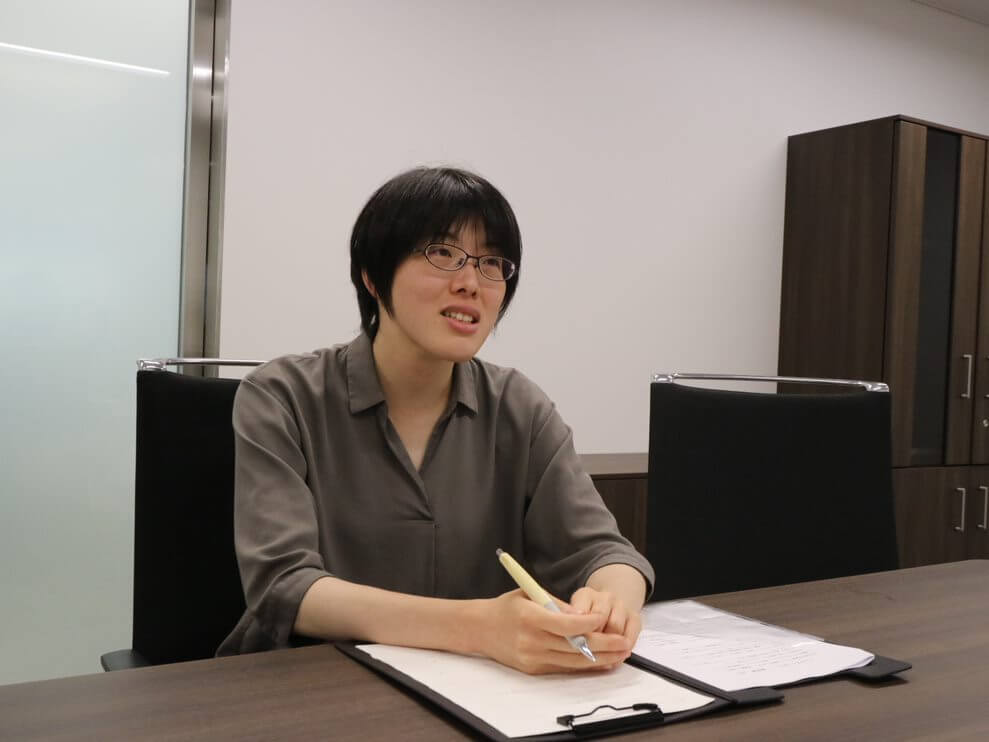 Naoya Ota was in charge of the modern exhibition. She faced a huge amount of photographic material and worked to recreate Shizuoka city in the 1950s.
Naoya Ota was in charge of the modern exhibition. She faced a huge amount of photographic material and worked to recreate Shizuoka city in the 1950s.
forest
Mr. Ota, please tell us how you came to create a model of Shizuoka cityscape from the 1950s for the modern exhibition that you are in charge of.
(Note) The exhibition room on the third floor focuses on the city and its people, and displays a huge diorama of Shizuoka's post-war cityscape during the Showa period. Streetcars, roads, parks, various landmarks, and even individual buildings are all reproduced as realistic three-dimensional models. This city model is easy to understand at a glance, and conveys the transition of Shizuoka city over the years in an easy-to-understand way.
Ota
The opportunity to create the model came from Shizuoka City having high-resolution aerial photographs of the city from 1961. The aerial photographs show what the city looked like before it underwent major changes during the period of rapid economic growth. In 1962, the city's streetcars were abolished, but we wanted to show what Shizuoka City looked like when the streetcars were still in operation, so we decided to create a model.
More than 1,000 photos were collected for the model construction.
forest
I understand that in order to actually create the city model, you collected photos from the time from local residents. How did you collect them? Also, please tell us how many photos you collected.
Ota
We posted an announcement on the blog of the Shizuoka City "Pioneer Museum" website and distributed flyers to solicit photos from the 1950s and 1960s from citizens, and ultimately collected over 1,000 photos. We numbered the photos that showed buildings and could identify the location. There are now over 700 numbered photos. In addition, donors brought the photos to the city hall counter, and we also visited their homes to show them to us.
However, even after getting the photos from that time, I didn't know what to do with them at first, and I hadn't even decided how to organize them. Looking at them alone, I didn't know what to do with them, so I gathered around the photos with another person in charge, agonizing over them and discussing things like, "Maybe this is better, maybe that's better." That's how we started.
 The aerial photograph from 1961 that led to the creation of the 1950s city model and a residential map from the same period.
The aerial photograph from 1961 that led to the creation of the 1950s city model and a residential map from the same period.
forest
Did you use any other reference materials besides photographs?
Ota
I also used a residential map from 1960 as a reference. The map had names written by hand, so as I compared the buildings and roads in the photograph with the map, I gradually began to understand, "This is this building, right?"
However, there were fewer color photographs than I had imagined from this era, and I had the problem of not being able to tell the colors, so while I was searching for materials that would show the colors of the buildings, I came across a book called "Movie Theaters: The Screens of My Youth: Shizuoka Movie Theater Story" [published in 2009] by the "Shizuoka Movie Theater Story" editorial committee. This book summarizes the movie theater district that was in Nanama-cho at the time, and it was very helpful because it contained many pictures and photographs.
No one could remember the exact color of the neon sign.
forest
So you picked out photos based on aerial photographs and maps, and also referred to books to create a three-dimensional representation. Could you tell us about the difficulties you faced in reading through the vast amount of material, and any ingenuity you used?
Endo
Among the numbered photos, I selected and printed out the ones I could use, and pasted them on the map where I thought they were. The ones with photos had a clear shape of the building, so I used them as a base to recreate it. Also, the 1961 aerial photos were very detailed, so I used them to create a three-dimensional model. If you can see the side of a building from above, lift it up and create a three-dimensional model. For the parts without any photos, I used a color photo from 1967 to create a three-dimensional model by comparing it with the aerial photo.
 City model in the making
City model in the making
Ota
The model was created in 1961, when the town was just beginning to be developed, and some roads were still under construction. Endo asked us to show the roads as they were completed, but the roads would look very different if they were completed, so we had the areas still under construction depicted in 3D.
In the 1950s, photographs were much more valuable than they are now, so there were some really large buildings for which we didn't have any photographs. For those parts that we just couldn't figure out, we recreated them by inferring from other photographs.
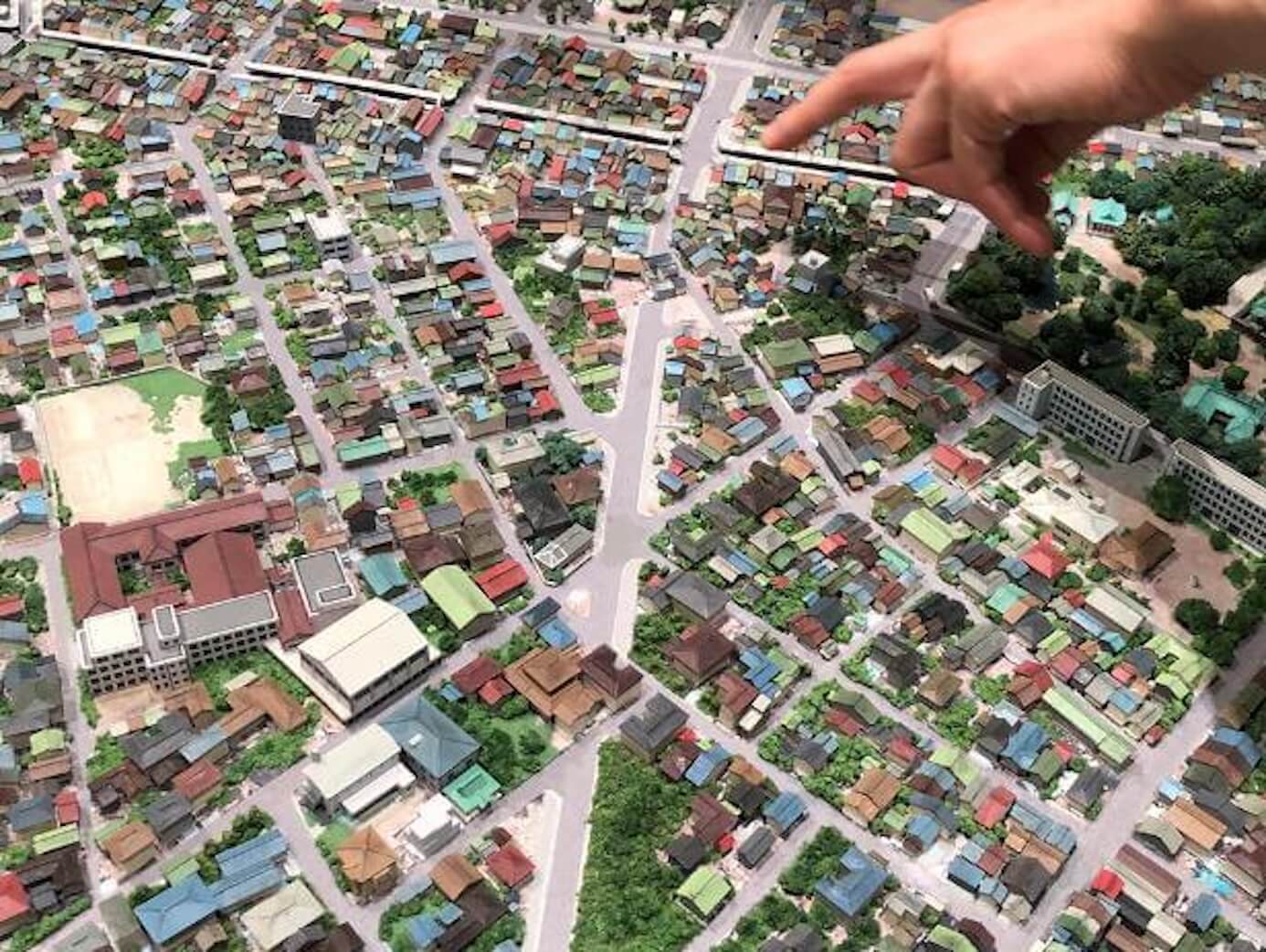 A house left on the road indicates that road construction is underway.
A house left on the road indicates that road construction is underway.
Masuda:
I was shocked that no one knew the color of the neon sign in front of the station. It was such a strong image, yet no one knew it.
Ota
When I asked several people, some said "yellow" and others insisted that "it was blue." In the end, we decided on the color based on the shape of the neon. In that sense, rather than saying that this model is complete, I would like to see it after the opening, get opinions from various people, collect more information, and correct the mistakes in the model. In this way, I would like to further develop this model.
A city model shaped by weaving together moments from the lives of Shizuoka residents
forest
The model is the starting point, and everyone's memories of Shizuoka will gradually be reflected in it.
Endo
That's right. If you look at the model alone, it's a model of a town from 1961, but if you consider the process of how it was made and the content it expresses, I think it's a very new model. For example, if you were to recreate a castle town from the Edo period, you would talk to researchers, have experts draw up plans, and create it based on the excavation situation, but this time it's completely different in that it's based on real information collected from citizens. I think that leaving information in this form and accumulating it sets it apart from previous historical models.
Ota
I think history is woven together from the accumulation of the lives of individuals whose names we don't even know. This model was created by collecting photos that capture moments in the lives of individuals, such as "photos of houses taken when they were rebuilt" or "commemorative photos taken during festivals." In that sense, this model can be said to be a model that weaves together the lives of Shizuoka citizens in the 1950s and 1960s.
forest
It would be really wonderful if the model could become a central hub for the exhibition, where the memories of many different people could accumulate and be consolidated.
This overlaps with what you just said, but is there any message you would like to convey to visitors through this model?
Ota
In fact, the shape of the city of Shizuoka hasn't changed much since the Edo period. Even when children look at the model with their grandparents, they can understand that "this place is like this now." Therefore, I think that communication across generations can occur through city models. I hope that people can feel that history is not a distant place, but something that is connected to us, something close to us, something that is here now.
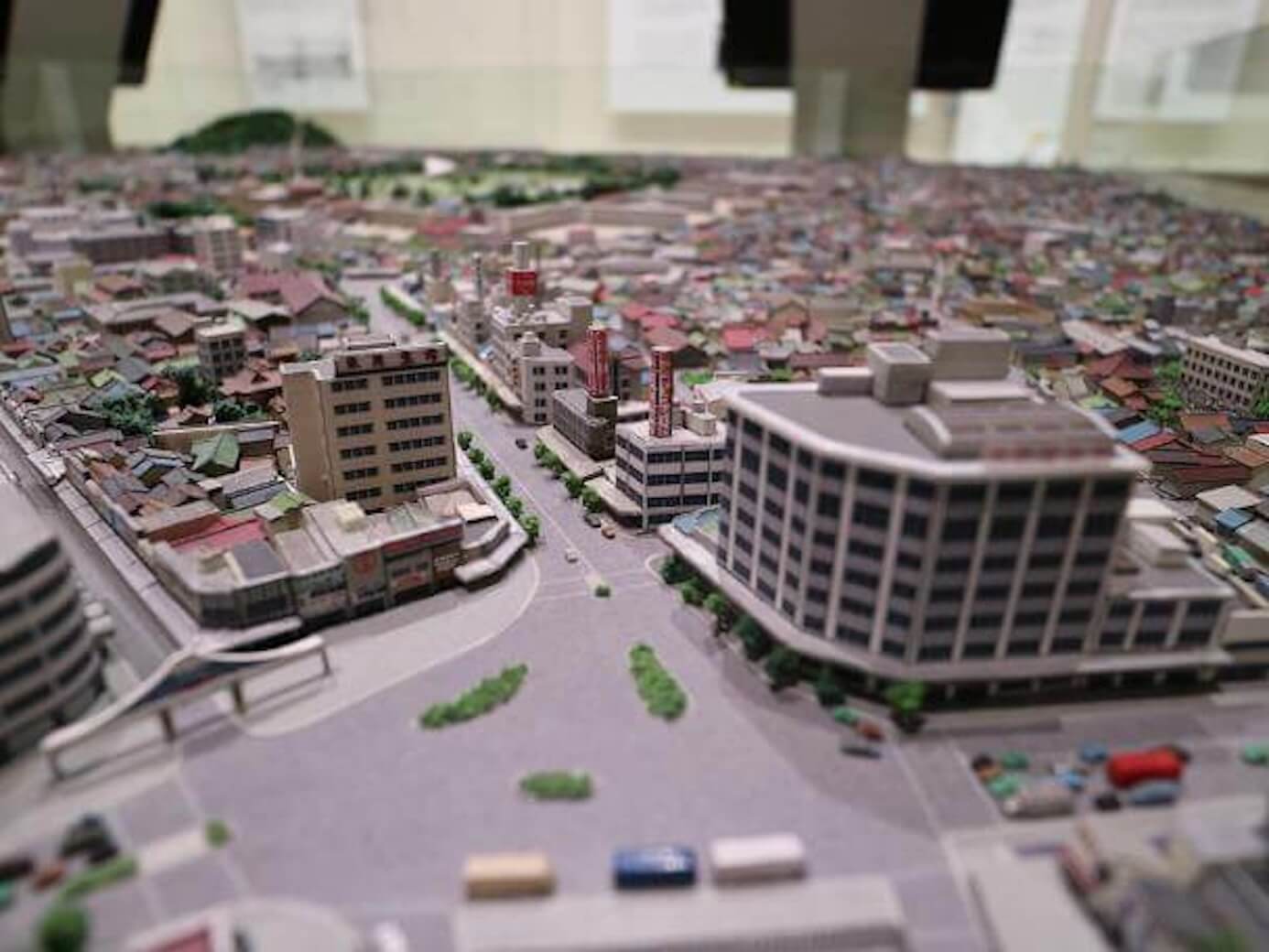 A model of the area around Shizuoka Station from the 1950s. On the left you can see a neon sign depicting Mt. Fuji.
A model of the area around Shizuoka Station from the 1950s. On the left you can see a neon sign depicting Mt. Fuji.
forest
Finally, please tell us what kind of facility you would like the history museum to be for Shizuoka city.
Ota
People tend to think that museums are difficult and have a high barrier to entry, but I wonder if there is a way to change that. Instead of the museum just disseminating information unilaterally, we could exhibit what we learn from the public, receive simple questions and opinions from children, and solve them together. I hope that we can become a facility that connects researchers and the public, a museum that can walk together with the public.
forest
The idea of an exhibition that is not completed before the opening, but is revised after the opening while checking the answers, was a very refreshing idea for those of us in charge of creating exhibitions. Thank you for today.
 Curators Masuda and Ota and NOMURA Co., Ltd. project members surround a model of Shizuoka city from the 1950s.
Curators Masuda and Ota and NOMURA Co., Ltd. project members surround a model of Shizuoka city from the 1950s.
Like this article?

